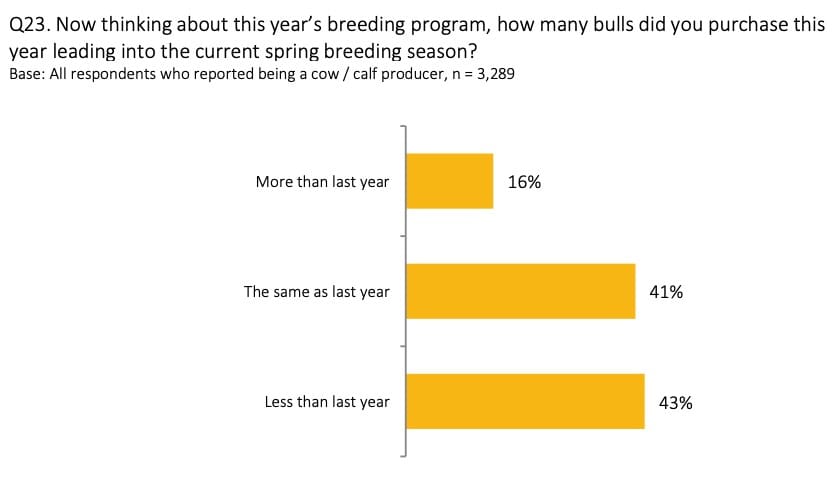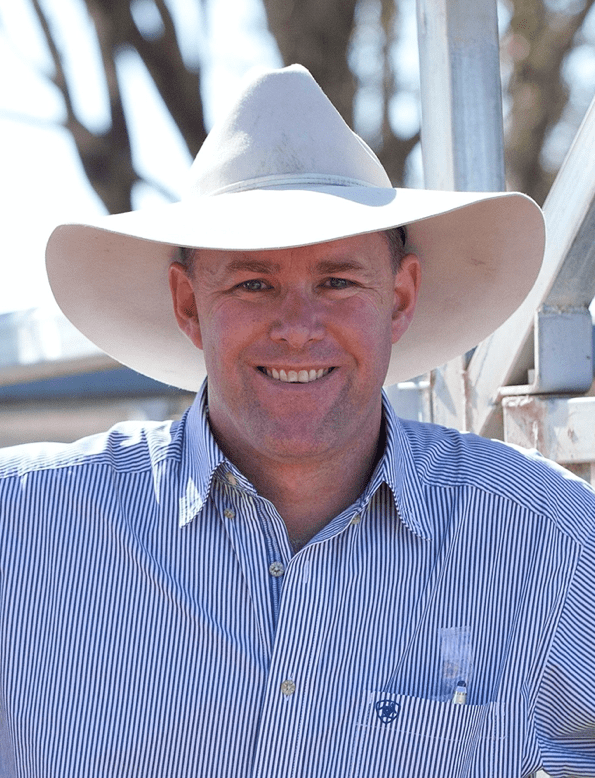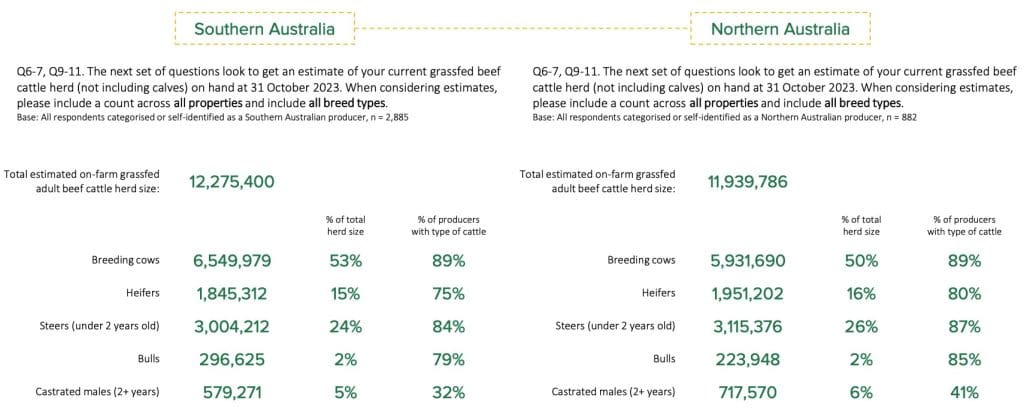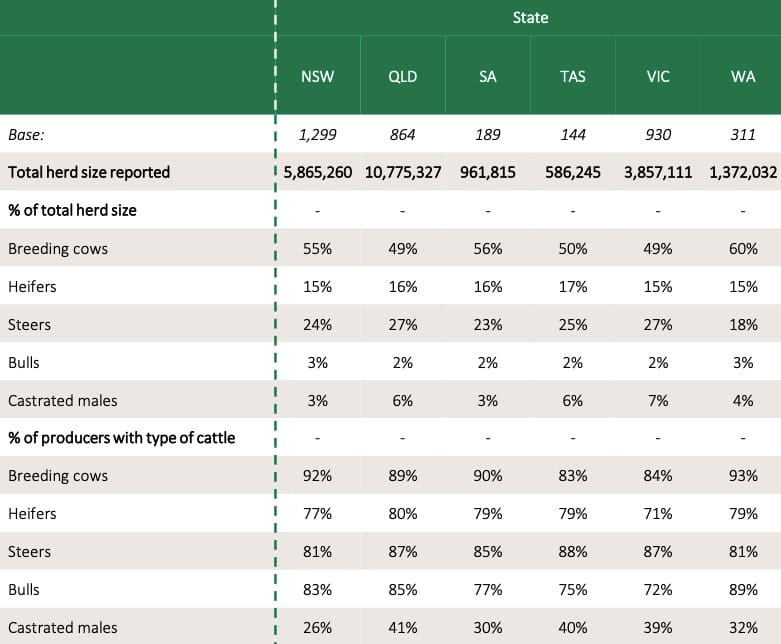THE inaugural Beef Producers Intentions Survey was conducted in November by Meat & Livestock Australia.
The results offer a range of insights into producer intentions for their breeding and marketing decisions. There is also some valuable insights into areas that include herd profiles and predominance of breeds used by producers in northern and southern Australia.
Estimates provided in the survey saw some 2885 producers identify themselves as Southern Australian, while 882 identified as northern Australian producers.
In their responses, they estimated some numbers around the classes of stock carried on-farm.
An interesting trend to emerge from the data is the percentage of bulls contributing to the overall breeding herd numbers. In southern Australia, 79 percent of respondents identified as having bulls in their herds. There were an estimated 296,625 bulls in herds in southern Australia which is 2pc of the total beef herd population.
In northern Australian systems, 85pc of producers who responded to the survey listed bulls within their herds. It was estimated there were 223,948 bulls, which also came to 2pc of the northern herd numbers.
Delving deeper into the survey data, it is possible to see the breakdown of the respondents by state.

Source: Beef Producers Intentions Survey – November 2023 MLA
The survey also presented data on recent bull purchases.
In 2023, the split between people who purchased the same number of bulls and those who purchased lass than 2022 was very close. There were no reasons published for the motivations behind these purchasing decisions.
Looking more closely at the two states which have the largest number of spring bull sales, in NSW 45pc of producers purchased fewer bulls in 2023 than in 2022 and in Queensland this number was 46pc.
Without more data, particularly data around the motivations behind purchase decisions, it is difficult to determine if the trends on purchasing bulls’ changes noticeably compared to last year.
Evaluating existing bulls before sale time
Choosing to replace bulls requires some planning and evaluation. Current bulls need to be considered both on the individual merits and on their place within the overall bull team.
On an individual basis, producers should make sure each bull is assessed well in advance of the bull sales time. An assessment of a bull should include consideration of calving results from the mobs the bull was joined to. Greater scrutiny can be applied by looking not just at calf numbers, but on pregnancy rates collected before calving and even on data collected at weaning such as weight of weaners compared to the herd average.
The physical ability of a bull to do his job shouldn’t ever be assumed. All bulls in a team should be assessed through a standard assessment such as BullCheck, conducted by an accredited cattle veterinarian. The BullCheck assessment considers five components associated with fertility:
- Scrotal circumference
- Physical assessment
- Semen
- Morphology
- Serving
Assessing a bull for these five factors early, along with a comparison of calving data and weaning weights, allows producers to rank bulls and have an earlier indication of the number of bulls that may need to be replaced. It becomes much easier to budget on replacements earlier as well as having more time to consider potential replacements.
In addition to replacing bulls no longer fit for purpose in the breeding herd, replacements may also be required as a result of age of bulls or in some cases, while the bull may be physically fit for purpose, his genetic merit acts to bring the average of the entire down.
This lowering of the team average can be seen through comparisons of production data collected on-farm. It can also be made by looking at the performance recording data (EBVs) of the entire team and considering the team average for traits of importance, as well as the actual upper and lower range within the team for each trait.
There are also some other guidelines that can help producers in the evaluation of their individual bulls and the place it takes in a team.
A useful guide can be to question if the bull tends to consistently fight with younger bulls, preventing them from performing in the herd. And depending on the size of the herd and process of keeping replacements, is inbreeding becoming a risk for the herd?
Setting these measures in place is more formalised than many producers may be used to doing. However a structured approach allows greater time and flexibility to make better and more effective selection choices.
This additional time is particularly important for commercial producers who are not intending to increase the numbers of bulls they purchase this year. In these cases, every bull has to perform, particular if new bulls have been purchased with the intent of improving the overall team performance.
 Alastair Rayner is the General Manager of Extension & Operations with Cibo Labs and Principal of RaynerAg. Alastair has over 28 years’ experience advising beef producers & graziers across Australia. He can be contacted here or through his website www.raynerag.com.au
Alastair Rayner is the General Manager of Extension & Operations with Cibo Labs and Principal of RaynerAg. Alastair has over 28 years’ experience advising beef producers & graziers across Australia. He can be contacted here or through his website www.raynerag.com.au


